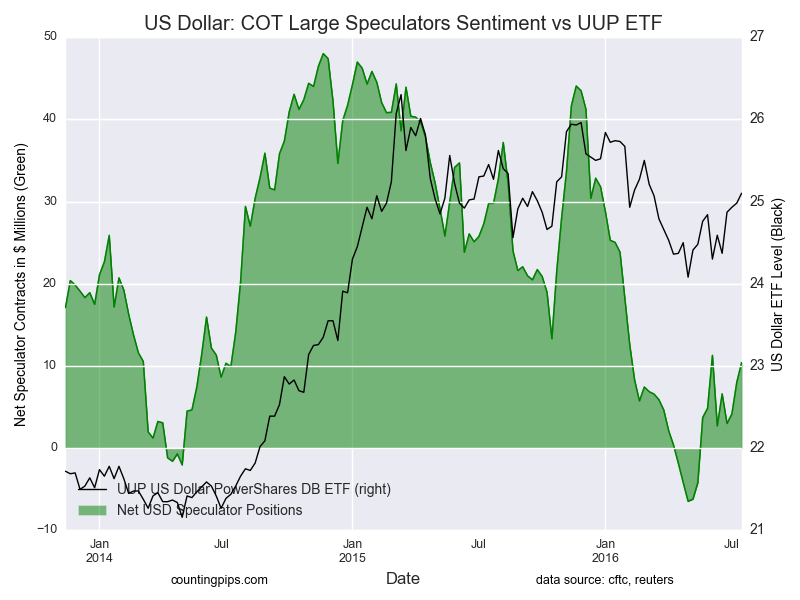
US dollar net speculator positions rose last week to +$10.42 billion
The latest data for the weekly Commitment of Traders (COT) report, released by the Commodity Futures Trading Commission (CFTC) on Friday, showed that large traders and currency speculators raised their bullish bets for the US dollar last week for a third consecutive week and boosted the aggregate bullish position to its highest level since early June.
Non-commercial large futures traders, including hedge funds and large speculators, had an overall US dollar long position totaling +$10.42 billion as of Tuesday July 19th, according to the latest data from the CFTC and dollar amount calculations by Reuters.
This was a weekly change of +$2.41 billion from the +$8.01 billion total long position that was registered on July 12th, according to the Reuters calculation (totals of the US dollar contracts against the combined contracts of the euro, British pound, Japanese yen, Australian dollar, Canadian dollar and the Swiss franc).
The US dollar speculator position has now gained by a total of $7.41 billion in the last three weeks overall and is at its highest level since June 7th when the bullish position was +$11.3 billion.
Weekly Speculator Contract Changes:

Last week’s data showed the major currencies that improved against the US dollar were the Australian dollar (+17,215 weekly change in contracts), the Canadian dollar (+4,893 contracts) and the New Zealand dollar (+1,162 contracts).
The currencies on the downside of speculative bets versus the dollar were the British pound sterling (-14,319 weekly change in contracts), euro (-12,231 contracts), Japanese yen (-8,192 contracts), Mexican peso (-2,194 contracts) and the Swiss franc (-2,031 contracts).
Notable changes:
- Australian dollar bets rose sharply and gained for a fourth week and are at the highest bullish level since May 10th
- Zealand dollar positions are up for five straight weeks while Canadian dollar positions have risen for four weeks
- Euro speculative positions have fallen for five straight weeks and continue to be at the lowest level (or most bearish level) since January 26th when positions equaled -127,215 contracts
- British pound positions fell for a third week and to their worst position of the year
This latest COT data is through Tuesday July 19th and shows a quick view of how large speculators or non-commercials (for-profit traders) as well as the commercial traders (hedgers and traders for business purposes) were positioned in the futures markets.
All currency positions are in direct relation to the US dollar where, for example, a bet for the euro is a bet that the euro will rise versus the dollar while a bet against the euro will be a bet that the dollar will gain versus the euro.
Weekly Charts: Large Trader Weekly Positions vs Price
EuroFX:
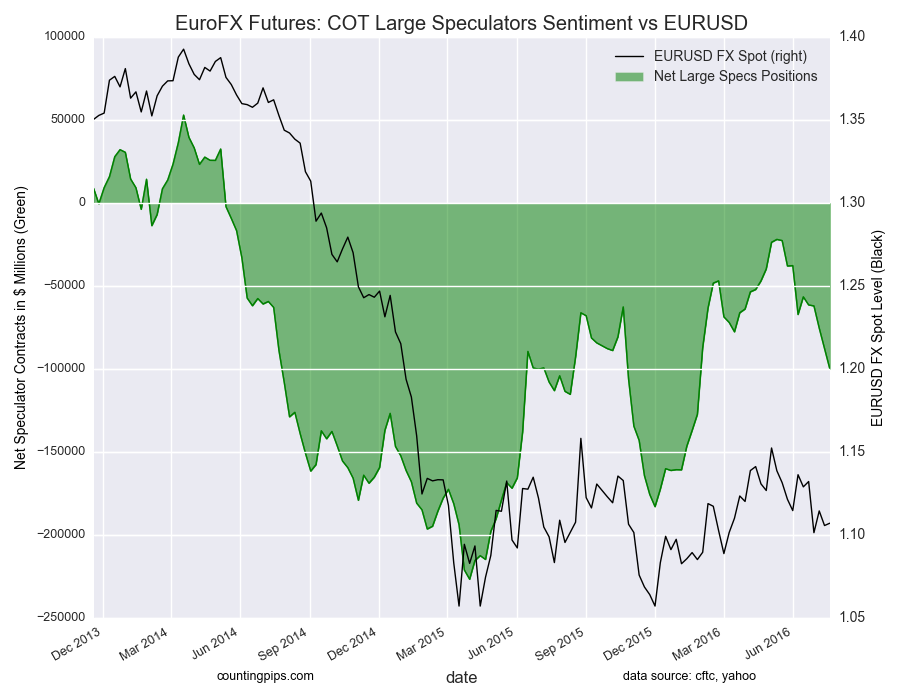
British pound sterling:

Japanese yen:
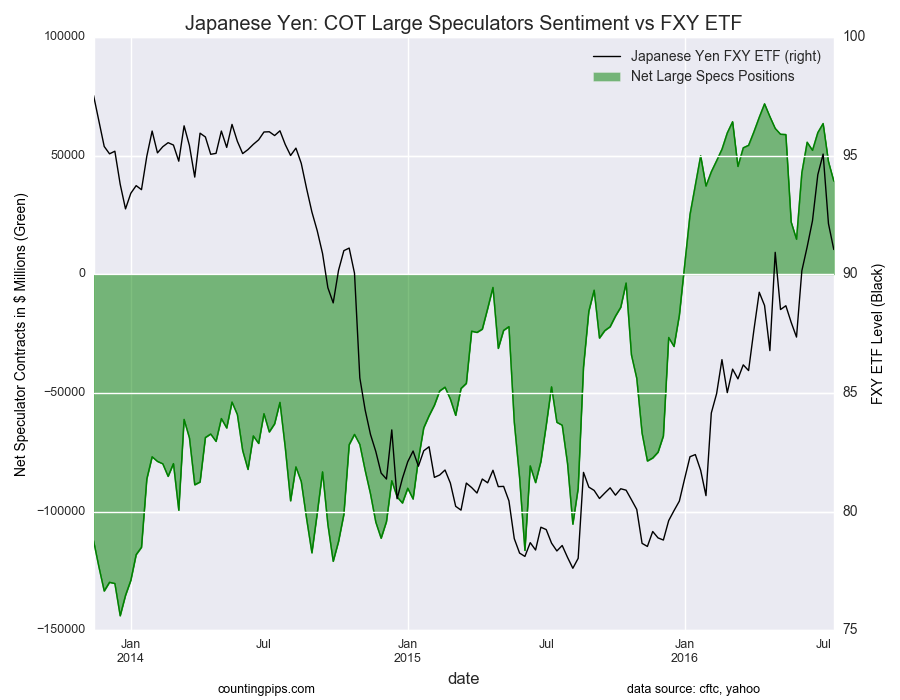
Swiss franc:
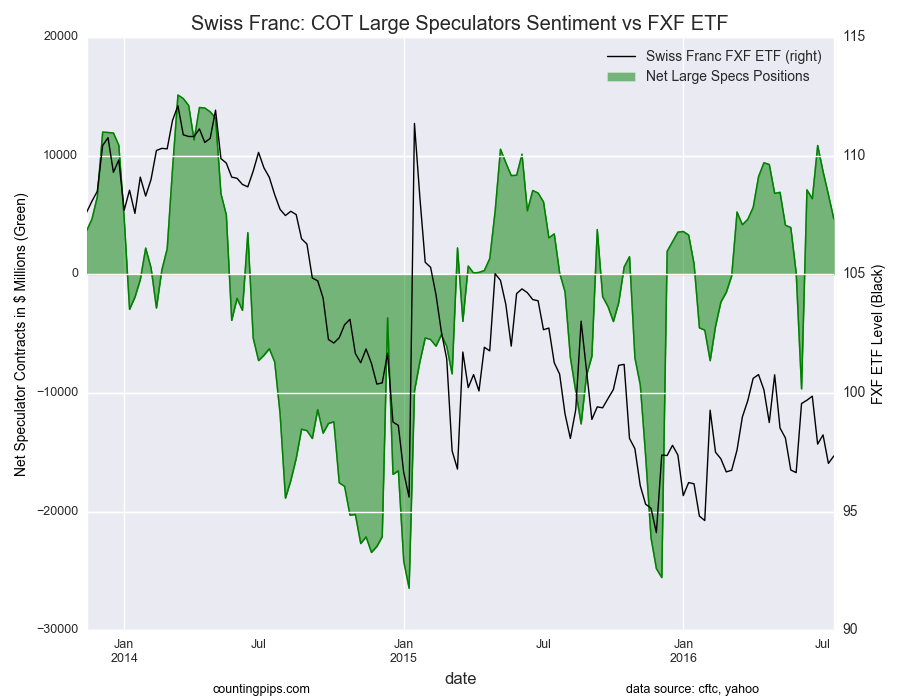
Canadian dollar:
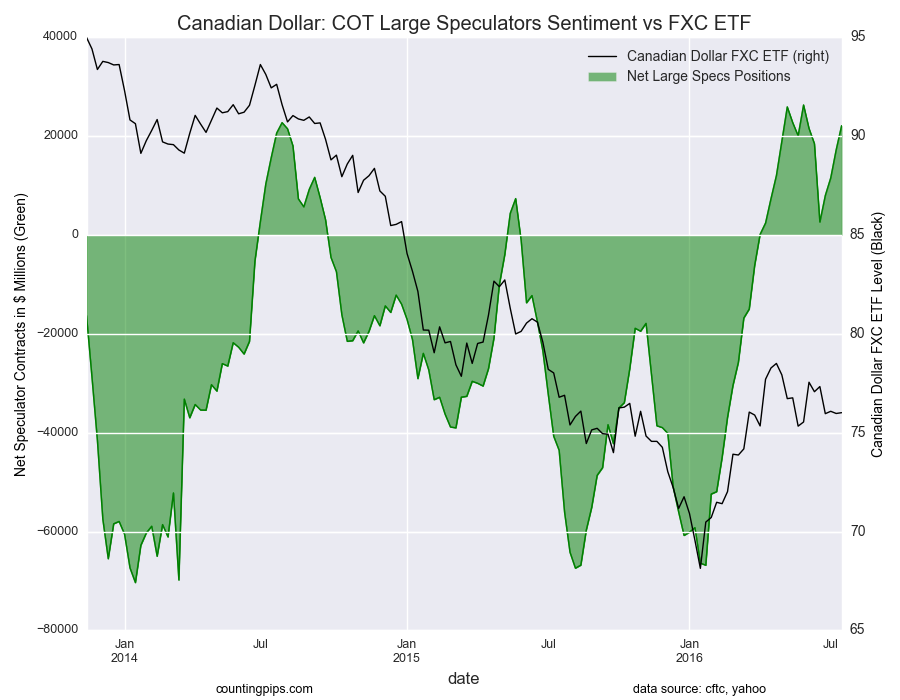
Australian dollar:
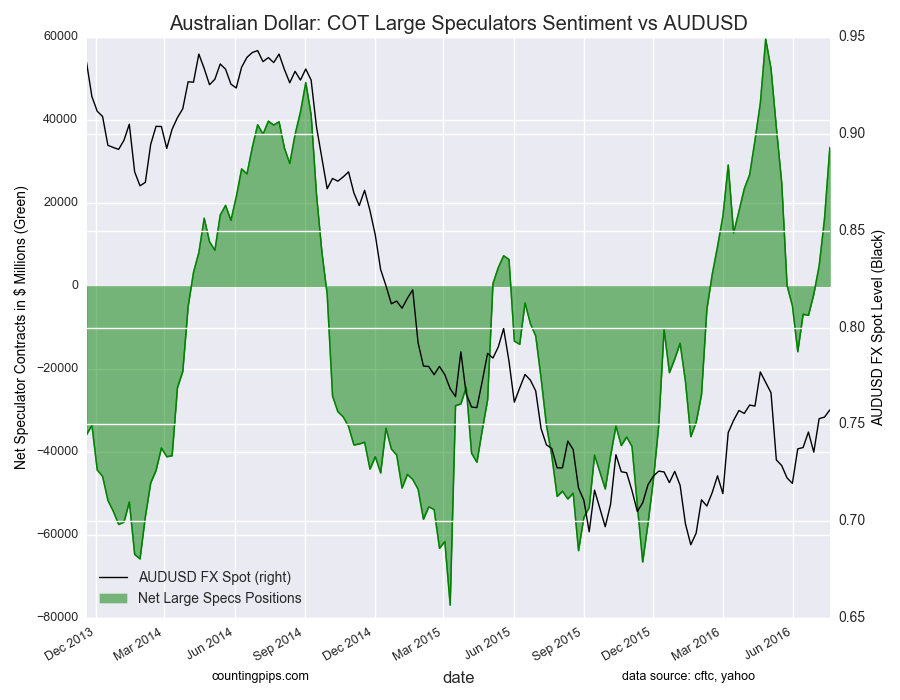
New Zealand dollar:
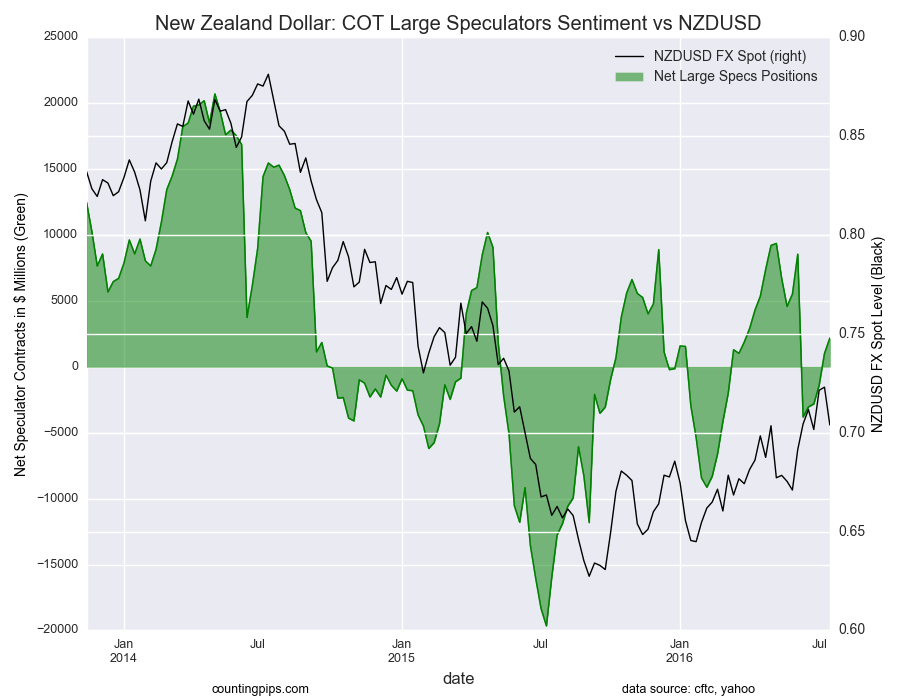
Mexican peso:
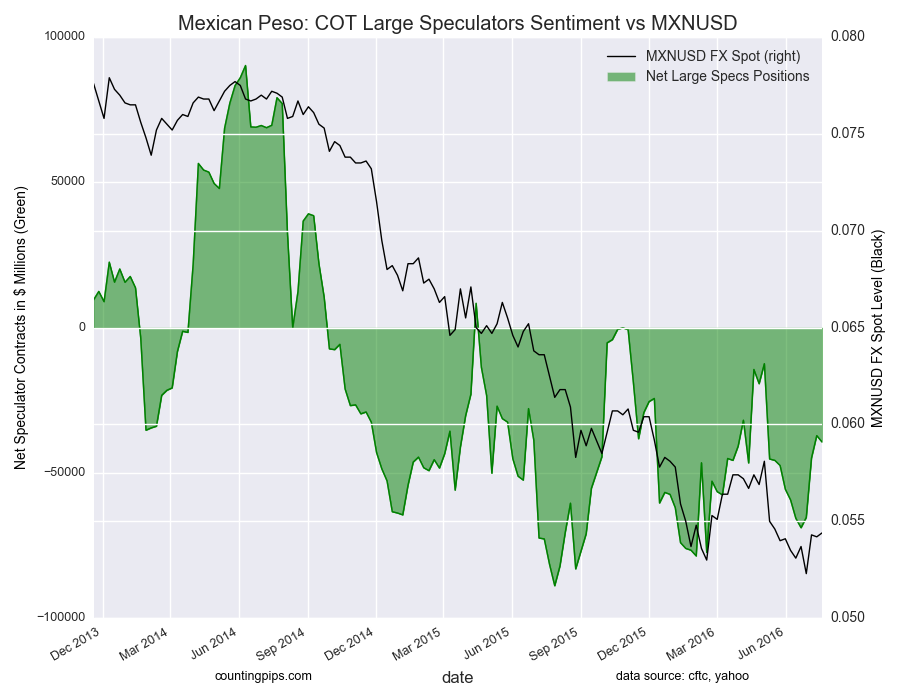
*COT Report:The weekly commitment of traders report summarizes the total trader positions for open contracts in the futures trading markets. The CFTC categorizes trader positions according to commercial hedgers (traders who use futures contracts for hedging as part of the business), non-commercials (large traders who speculate to realize trading profits) and nonreportable traders (usually small traders/speculators). Find CFTC criteria here: (http://www.cftc.gov/MarketReports/CommitmentsofTraders/ExplanatoryNotes/index.htm).
The Commitment of Traders report is published every Friday by the Commodity Futures Trading Commission (CFTC) and shows futures positions data that was reported as of the previous Tuesday (3 days behind).
Each currency contract is a quote for that currency directly against the U.S. dollar, a net short amount of contracts means that more speculators are betting that currency to fall against the dollar and a net long position expect that currency to rise versus the dollar.
(The charts overlay the forex closing price of each Tuesday when COT trader positions are reported for each corresponding spot currency pair.) See more information and explanation on the weekly COT report from the CFTC website.
All information contained in this article cannot be guaranteed to be accurate and is used at your own risk. All information and opinions on this website are for general informational purposes only and do not in any way constitute investment advice.
